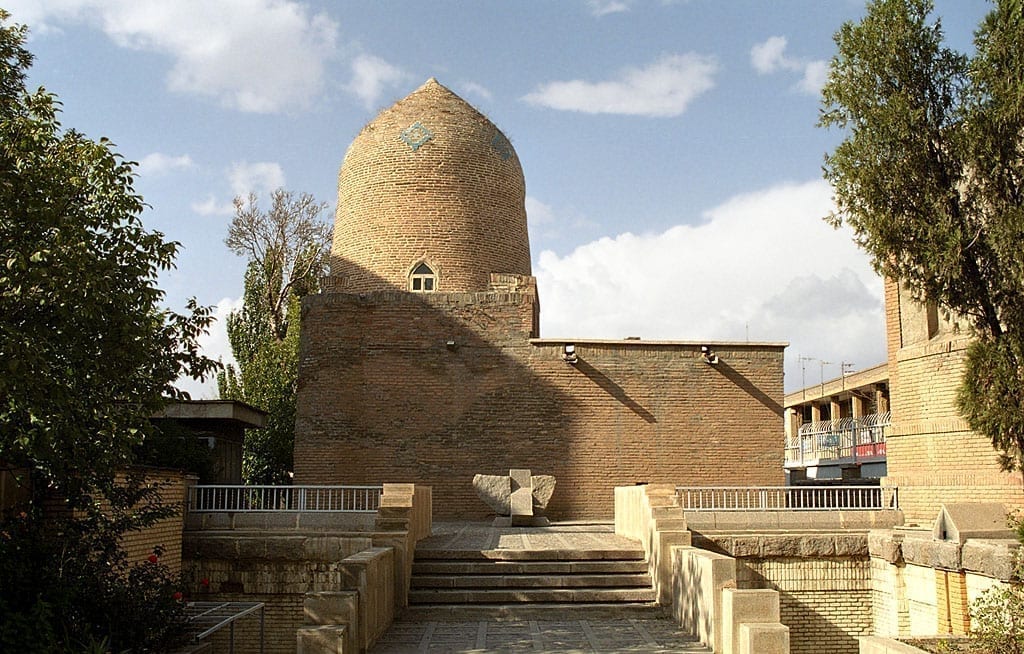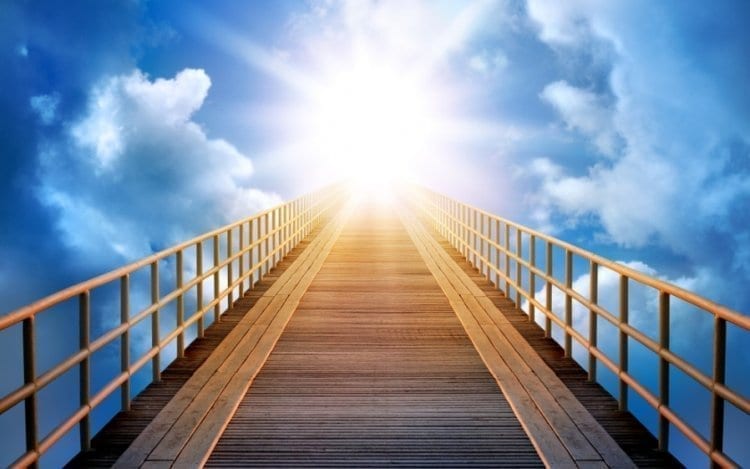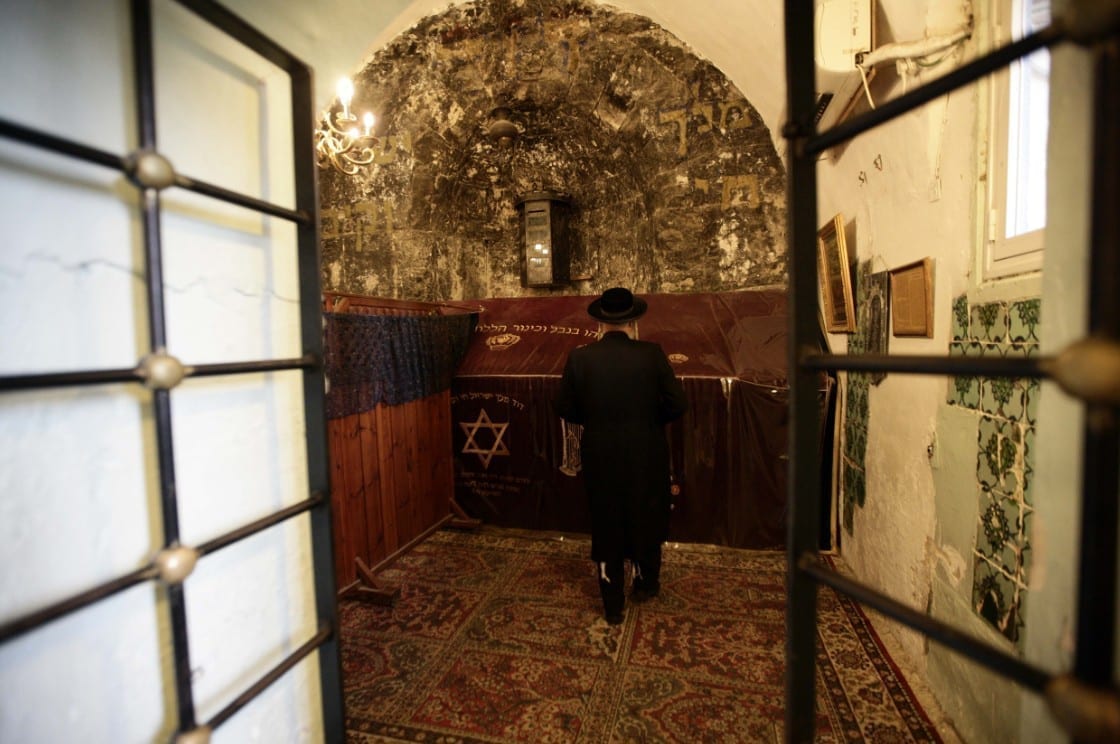Indeed, the phrase “Sodom and Gomorrah” is used until today as a metaphor for utter depravity, based on what the Bible says about the decadence of these cities’ residents. Before turning to the archaeologists’ findings, let us examine the background of the story and see how the Bible describes the area where the calamity occurred.
The Torah relates that Abraham and Lot had so many cattle that they both needed extensive grazing land. A clash broke out between their shepherds, which brought about their separation:
Abram was very wealthy with cattle, silver, and gold… Lot, who went with Abram, also had flocks and cattle and tents. The land could not support them to dwell together, for their possessions were many, and they could not dwell together. A quarrel flared up between the herdsmen of Abram’s cattle and the herdsmen of Lot’s cattle… Abram said to Lot, “Please let there be no quarrel between me and you and between my herdsmen and your herdsmen, for we are kinsmen. Is not all the land before you? Please part from me…” [1]
Lot chose to live in the Jordan plain, which was green and fertile and rich with water, where the cities of Sodom, Gomorrah and Zoar were located:
Lot raised his eyes, and he saw the entire plain of the Jordan, that it was entirely watered; before the Lord destroyed Sodom and Gomorrah, like the garden of the Lord, like the land of Egypt as you come to Zoar. Lot chose for himself the entire plain of the Jordan. Lot traveled from the east, and they parted from one another.
Next to Sodom, Gomorrah and Zoar were two other cities, named Admah and Zeboiim. All of them were in the area of what is now known as the Dead Sea, and were ruled by kings:
They waged war with Bera the king of Sodom and with Birsha the king of Gomorrah, Shineab the king of Admah, and Shemeber the king of Zeboiim, and the king of Bela, which is Zoar. [2]
Concerning the place where these five kings gathered together to wage war against the other four kings mentioned in Genesis, the Torah says:
All these joined in the Valley of Siddim, which is the Dead Sea.
This means that today this area is called the Dead Sea, but then, when Sodom and Gomorrah were cities, it was called the Valley of Siddim.

The Cruelty of the Cities’ Residents
After giving these background details about the locality, the Torah tells the reason these cities were destroyed and what happened during the upheaval. The cities of the plain were built in a region that abounded with water and vegetation. The Bible itself testifies that the place was as fertile “as a garden of the Lord,” and our Sages say that “all the delicacies of the world could be obtained there.” [3]
In addition, the earth there contained precious metals and gems:[4]
When a man went out to buy a vegetable, he would say to his servant, “Go and buy me a vegetable for an isser [currency].” He would go to pull out the vegetable, and would find gold… silver… precious stones and gems underneath.
But the cities were evil and systematically terrorized defenseless travelers, even though the residents lacked nothing in their lives, as related in Pirkei D’Rabbi Eliezer:[5]
They were satiated with their land’s crops and dwelled secure and tranquil without fear of war from their neighbors. They had a good life, and yet refused to offer a piece of bread to the poor… They wouldn’t show respect for their Lord by sharing their food with guests and strangers.
They went so far as to ensure their fruit trees had no fruits at the tops so that even birds wouldn’t benefit from them… they established a court of corrupt judges, and every guest or stranger who entered Sodom would be robbed by their perverse laws and would be thrown out bereft of
everything he owned, including the clothes on his back…
It was decreed in Sodom that anyone who offered a slice of bread to a pauper or a stranger would be put to death by fire. Plutit, Lot’s daughter, was married to one of the distinguished people of Sodom. One day she saw a pauper in the street and felt sorry for him. What did she do? Every day, before she went to draw water, she would put food in the pitcher and clandestinely give it to the pauper to eat.
The people of Sodom were beside themselves when they saw that this pauper had managed to stay alive. When they found out what Lot’s daughter had done, she was sentenced to death by fire. She cried out, “Lord of the Universe! Pass judgment on the people of Sodom for what they did to me!” Her cry came before God’s throne. God said, “I will go down and see if things are indeed as the cry that came before Me. If the people of Sodom acted as this girl has said, I will turn its foundations upside down…”
Lot’s daughter, however, was the exception, for Jewish oral tradition tells us that “the youth were the first to sin in Sodom.”[6]
Before the great disaster, the people of Sodom and Gomorrah had been sent portents about the impending catastrophe: [7] “He [God] gave them an opportunity to repent… For twenty-five years, God sent thunderous earthquakes to get them to repent, but they didn’t.”
In other words, there were cues from the environment that a horrendous disaster was looming, meant to arouse them to make a moral reckoning and correct their ways. But instead, they attributed it to natural phenomena.
When their evil had surpassed all bounds, God decided that the time had come to punish them for their deeds. The only ones to be saved would be Abraham’s relative Lot and his family, who did not behave like the rest:
[8]And the Lord said, “The cry of Sodom and Gomorrah has become great and their sin has become very severe…”
The two angels came to Sodom in the evening, when Lot was sitting at the gate of Sodom… The men [i.e., angels] took hold of his hand and his wife’s hand and the hand of his two daughters, out of the Lord’s pity for him. They took him out and placed him outside the city… he [the angel] said, “Flee for your life…” Lot said to them, “Behold now, [a certain] city is near to flee to, and it is small. Let me please flee there…” Therefore, he named the city Zoar.
The Lord caused to rain down brimstone and fire upon Sodom and Gomorrah, from the Lord, from heaven. He turned over these cities and the entire plain, and all the inhabitants of the cities, and the vegetation of the ground.
Today, anyone who passes by the Dead Sea can see clearly how the place was turned upside down. The mountains seem unnaturally cut and stand on their side, and the deserted region is saturated with salt—mute testimony to the cataclysm that convulsed the region.
Only the cool water flowing in a few brooks, and the slow dribbling in a few sweet-water springs, stand in sharp contrast to the dry, hot desert that surrounds them after the wholesale destruction of Sodom and Gomorrah. These streams are a silent witness to the days of prosperity when these cities were lush and verdant and called by the Torah “a garden of God.”
Where Were the “Cities of the Plain”?
Most scholars recognize that the cities of the plain were located on the southeast flank of the Dead Sea, for the following reasons:
A. The Bible’s description of the Jordan plain area as being inhabited, fertile and verdant during Abraham’s time is compatible with archaeological reports on this region regarding that period: “Oases in the lower part of the Jordan River and the plains of Moab were settled at the beginning of the second millennium B.C.E. (which was before the era of the Patriarchs), and these oases gave the whole plain the appearance of a garden of God.”[9]
B. It is known that the cities of the plain region were destroyed following a violent “natural” cataclysm: “Careful examination of literary, geological and archaeological evidence leads to the conclusion that the corrupt ‘cities of the plain’ (Genesis 19:29) lay in the area which is now submerged beneath the slowly rising waters of the southern section of the Dead Sea, and that their destruction came about through a great earthquake, which was probably accompanied by explosions, lightning, a flow of natural gas, and a general conflagration.”[10]
C. Around the area is a huge cemetery containing the bodies of hundreds of thousands of people: “In archaeological excavations in Bab al-Dra, situated east of Loshon—a kind of peninsula east of the Dead Sea near Wadi al-Kerach—is a huge cemetery where half a million people are buried according to estimates of the excavators. It is presumed that the place was used by the plain cities. Based on this, the plain cities were characterized by an extremely dense and huge population.”[11]
Zoar
As seen in the verses above, at the request of Lot, God did not destroy Zoar, and it remained the last remnant of the plain cities. Sources prove that the city of Zoar continued to exist even in later times. The prophet Isaiah says: [12]
My heart shall cry out for Moab; its bars as far as Zoar, a third-born heifer.
During the period of the Tannaim, the city of Zoar was still in existence. It is mentioned in the Mishnah and was called the “palm city”:[13]
It happened that the sons of Levi went to Zoar, the palm city.
An interesting reference to Zoar was also found in the famous Madaba map, located in a Byzantine church in the city of Madaba, Jordan, and dated to the fifth or sixth century C.E.
Thus, a historical tradition exists of Zoar’s geographical location in the region of the Dead Sea and its continued existence after the destruction of Sodom and Gomorrah, as the Bible says. Apparently, the other cities (Sodom, Gomorrah, Admah and Zeboiim) listed in the verses were very near to Zoar. A simple reading of how Lot escaped from Sodom indicates these cities’ proximity; it was possible to leave Sodom at dawn and reach Zoar on foot by sunrise, as Lot did:[14]
And as dawn rose, the angels pressed Lot, saying, “Get out”… they took him out and placed him outside the city [of Sodom]… The sun rose upon the earth, and Lot came to Zoar.
The Sages say: [15] “These five [cities] lay on a rock plateau, and an angel stretched forth its hand and turned it upside down.” Thus, as noted above, the small town to which Lot fled during the upheaval was the sole remnant of the five cities, as he had requested.
Until this day, the Dead Sea area serves as a powerful memorial to humanity: a place that held a large population and enjoyed a rich water supply and fertile vegetation was completely wiped out due to the sins of its inhabitants, who had corrupted themselves and refused to repent. It became a place utterly barren, filled with pillars of salt.[16]
Sodom and Gomorrah became the ultimate symbols of desolation. When the Torah warned of the Land of Israel’s impending destruction due to the Israelites’ sins, it refers to what happened to Sodom and Gomorrah:[17]
Sulfur and salt have burned up its entire land! It cannot be sown, nor can it grow anything; not even grass will sprout upon it. It is like the overturning of Sodom, Gomorrah, Admah and Zeboiim, which the Lord overturned in His fury and in His rage.
Nevertheless, the prophets of Israel’s promise us that in the future, at the end of Israel and humanity’s process of spiritual rectification, the entire Land of Israel will again bloom, yield produce, and pulsate with life.

SOURCES AND COMMENTS
Adapted from ‘Hidden Treasures – Archaeology Discovers the Hebrew Bible’ by Rabbi Zamir Cohen. Click here to buy
Vidal de la famille. Dapoxetine Tab. Generic Dapoxetine In India. cialispascherfr24 Une grande.





